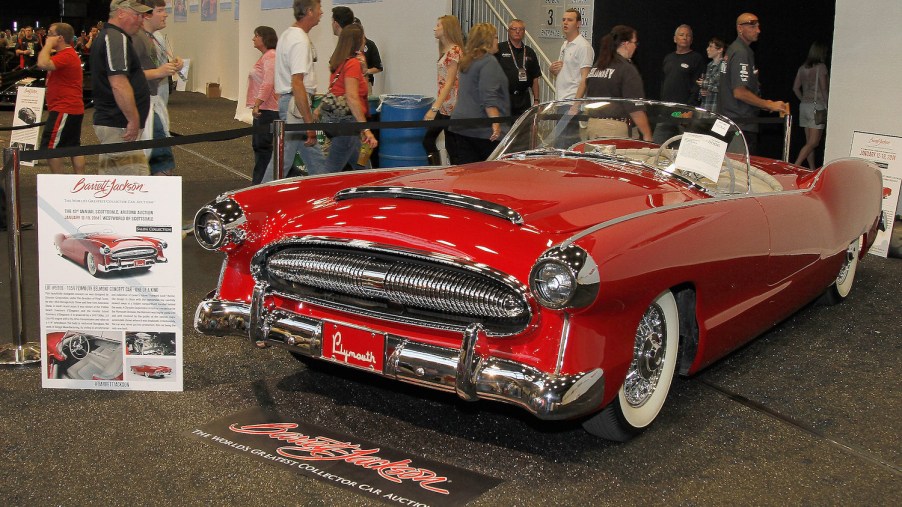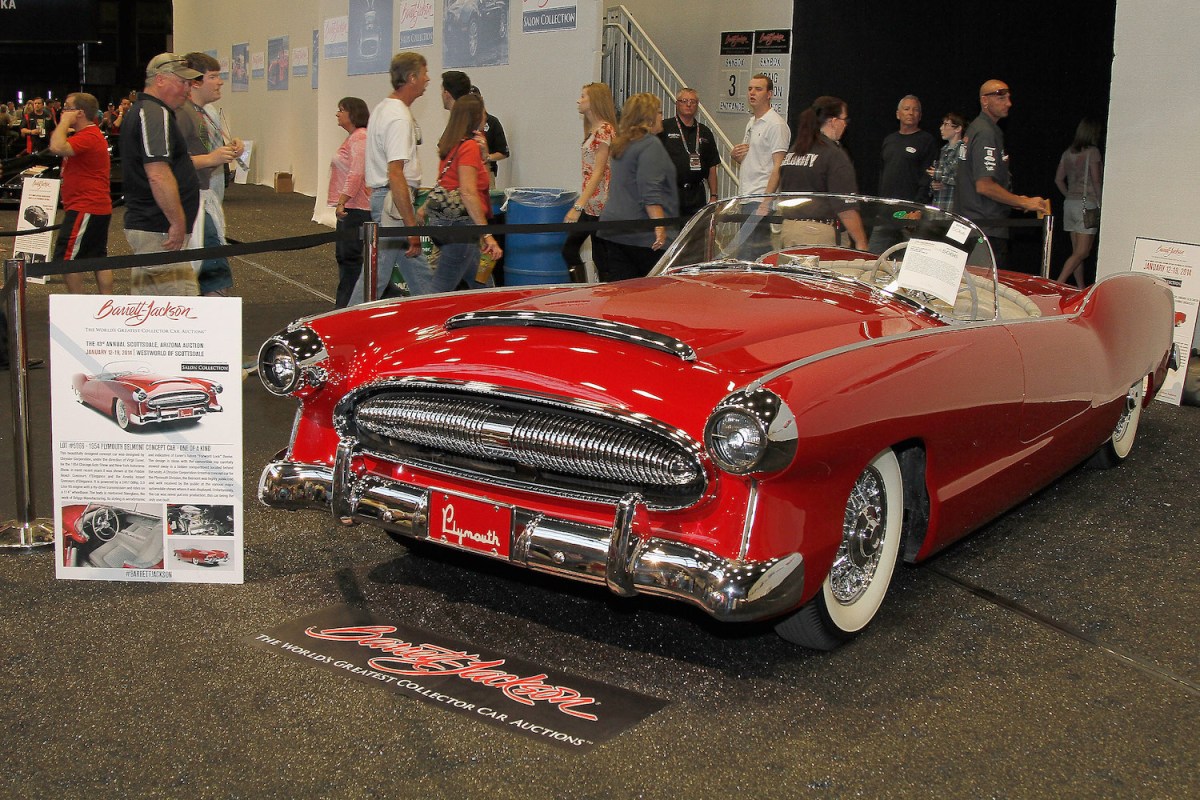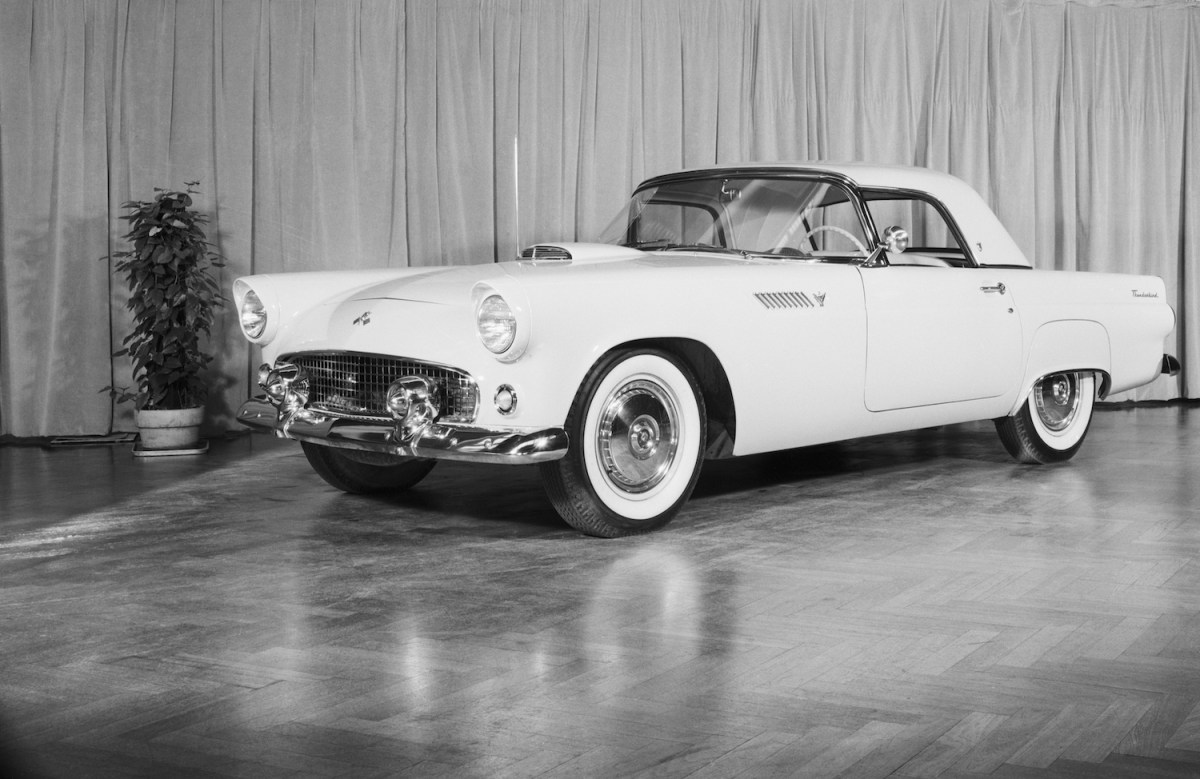
The Plymouth Belmont: The Roadster That Never Was
In the 1950s, the Chevrolet Corvette and the Ford Thunderbird were battling for convertible car supremacy. Although the T-Bird was bigger and thus less of a sports car than the Corvette, it was reportedly more luxurious. Nevertheless, both cars were at each others’ throats. During this battle between Chevrolet and Ford, Chrysler’s more affordable Plymouth brand was concocting something that unfortunately never saw the light of day, the Belmont.
What was the Plymouth Belmont?

Like the Corvette, the Belmont was a fiberglass convertible coupe with a V8 and rear-wheel-drive built as a concept car in 1954, according to Mecum. It made 150 horsepower from its 3.9-liter, which come mated to a semi-automatic transmission called the Hy-Drive. The Hy-Drive was an interim transmission between the manual and fully automatic Powerflite. It used a fluid coupling to allow a driver to shift gears without the clutch, once the car was in motion. It was intended as a future turbine engine platform.
What happened to the Plymouth Belmont?
The Belmont was bred to compete against the Corvette and T-Bird, but was ultimately abandoned, officially because it was “too old”. This may have been corporate-speak for Plymouth executives getting skittish in the face of the Corvette’s success the previous year. The Hy-Drive, although innovative, was a bandaid to satisfy customers until the fully automatic transmission was released. The Hy-Drive required a specific engine block, and thus couldn’t be used on just any car. It needed a different tail shaft, a larger radiator for the heat it generated, different floors, and other things like a clutch, gear ratios, and speedometer cable.
The Corvette and Thunderbird were close competitors

The Ford Thunderbird debuted in 1955 as a powerhouse personal luxury car. It used a 4.8-liter Y-block V8 that made 193 horsepower, mated to either a manual or automatic transmission. Unlike the Belmont and Corvette, the body was made of steel. Exterior styling was vastly different from the other two. It could hit 60 mph in 8.8 seconds depending on its transmission and topped out at 118 mph.
The 1954 Corvette clocked in at a lean 2886 pounds thanks to its fiberglass body. Under the hood lay a 150-horsepower inline-six mated to the Powerglide, a two-speed automatic transmission. The Corvette with its little six-cylinder could hit 60 mph in 11.5 seconds but managed a 120 mph top speed.
How would the Plymouth Belmont have fared against the competition?
In theory, the Belmont could reach 60 mph in 11.5 seconds according to Automobile-Catalog, but it’s purely speculatory. It estimates the Belmont’s weight as 3,530 pounds. Plymouth was Chrysler’s more affordable brand at the time, so perhaps its sale price might have undercut the T-Bird and Corvette. It could have therefore been a more viable performance car option. Regardless, while the T-Bird broke away from its sports car genesis, it did last for decades on Ford’s lineup. The Belmont may have survived and evolved, but we’ll never know.


